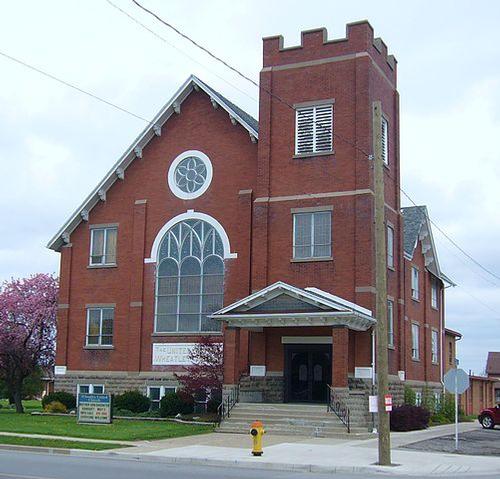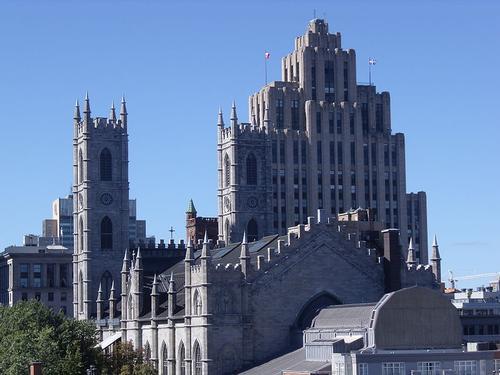QUEBEC
Population

Population
Popular destinations CANADA
| Alberta | British columbia | Manitoba |
| New brunswick | Newfoundland and labrador | Northwest territories |
| Nova scotia | Nunavut | Ontario |
| Prince edward island | Quebec | Saskatchwan |
| Yukon |
Population
The inhabitants of Québec, the Québécois, call the province in French "le Québec", and the capital "Québec". In 2024, the province had a population of just over 9 million.
Although the city of Québec is the capital, Montreal is the province's largest city. Other agglomerations with more than 100,000 inhabitants include Trois-Rivières, Sherbrooke, Gatineau and Saguenay.
Language
French is the only official language of the province. The québécois variant of French has in some places more archaic characteristics than the French spoken in France. One example is the French archaic espérer, which means waiting, but which is expressed as attendre in present-day France. There are also other differences, for example in phonology and the somewhat purer vocabulary. For example, québécois fin de semaine is week-end in French, and québécois traversier corresponds to French ferryboat. The dialect of Quebec is called joual.
| FRENCH | JOUAL |
| toi | toé |
| moi | moé |
| il | y |
| elle | a |
| oui | ouais of ouin |
| ici | icitte |
| bien | ben |
| nuit | nuitte |
| froid | frette |
| dans les | dins |
| avec | ak |
| ce soir | à soère |
| à un moment donné | àmandonné |
| boue | bouette |
Other variants of French were introduced to Quebec by immigrants from Haiti and French-speaking Africa, among others.
General
Canada has two official languages, English and French. French is the mother tongue of 24% of the population, English of 63%.
Canadians have their own distinctive accent, but written Canadian English is very similar to English in England. Outside Quebec, fewer and fewer people have French as their mother tongue, and although there are still French-speaking communities in the Maritime Provinces, Manitoba and Ontario, in some areas the language has been strongly influenced by English in terms of words and sentence structure. This has resulted in a mixed language that is called 'franglais' and is incomprehensible to an outsider.
Religion
 Wheatley United Church of CanadaPhoto: Ducio1234 in the public domain
Wheatley United Church of CanadaPhoto: Ducio1234 in the public domain
In the 16th century, due to the immigration of the French, the population of Canada was mainly Roman Catholic. In 1759 Canada came into British hands, after which Protestant churches from Great Britain were given the opportunity to expand here, and Canada gradually became more Protestant.
Canada is home to almost all denominations and philosophical groups. At present, approximately 45% of the population is Roman Catholic, mainly French speakers, 18% belong to the United Church of Canada, 12% belong to the Anglican Church of Canada, 3% are Presbyterian, 3% Lutheran and 2 .5% Baptist. Also to be mentioned are the Reformed Church, to which many Dutch Reformed immigrants joined, and the Christian Reformed Church, to which many Reformed members have joined.
The Catholics of the Byzantine rite - mainly (descendants of) immigrant Ukrainians (Ruthenians) - have their own hierarchy and monasteries in Canada. Canada has over 340,000 Jewish residents and many Muslims, Buddhists and Hindus.
Canada also owns an Amish community in Ontario. The Amish or Ammanites are a spin-off from the Christian Mennonite community founded in Europe in the early 16th century. They were prosecuted for refusing to take the oath or carry weapons. In the 17th century an even stricter sect split off, emigrating to America and in 1799 to Ontario.
| Religion | 1981 | 1991 |
| Non-believers | 7,4% | 13,0% |
| Buddhists | 0,2% | 0,6% |
| Catholics | 47,3% | 45,7% |
| Protestants | 41,2% | 36,2% |
| Eastern Orthodox | 1,5% | 1,4% |
| Hindu | 0,3% | 0,6% |
| Muslims | 0,4% | 0,9% |
| Jews | 1,2% | 1,2% |
| Sikhs | 0,3% | 0,5% |
| Others | 0,2% | 0,2% |

One of the most beautiful churches in North America is the Catholic Basilique Notre-Dame in Montreal. The original building is from the 17th century, but construction of a new church started in 1829. The church offers 3800 places in the nave and on the balconies.
Montreal's largest church is the Oratoire Saint-Joseph. The octagonal copper dome is one of the largest in the world - 44.5 meters high and 38 meters in diameter. The city of Montreal also has more than 300 churches and metropolitan Montreal even 450. Of these, 70% are Roman Catholic, 20% Protestant, 4% synagogues and 6% are churches of other denominations.
The Church of Inuvik, in the far north of Canada, was built in the shape of an igloo because of the climate.
The Cathédrale de Gaspé on the Gaspé Peninsula is North America's only wooden cathedral. Church Point, Nova Scotia, is dominated by the early 20th century Saint Mary's Church, the tallest and largest wooden church in North America.
The Basilique Notre-Dame-de-Québec is more than 350 years old and the oldest parish in North America.
The Cathédrale Anglicane in Québec-City is the first Anglican cathedral to be dedicated outside Britain (1804).
Winnipeg has the largest Ukrainian group outside Ukraine in its territory. The many Russian Orthodox churches with their onion-shaped domes and spiers testify to this, such as the Holy Trinity Ukrainian Orthodox Cathedral, the St. Vladimir and Olga Ukrainian Catholic Church and the St. Nichols Ukrainian Catholic Church. These churches are also part of the landscape in the prairies. The first Ukrainian churches were built from the beginning of the massive Ukrainian influx that started in the late 19th century, affecting both Roman Catholics and Russian Orthodox.
Near Cardston, in the Waterton Lakes National Park, is Canada's only Mormon temple, a snow-white structure built in 1913.
Sources
Wikipedia
CIA - World Factbook
BBC - Country Profiles
Copyright: Team The World of Info